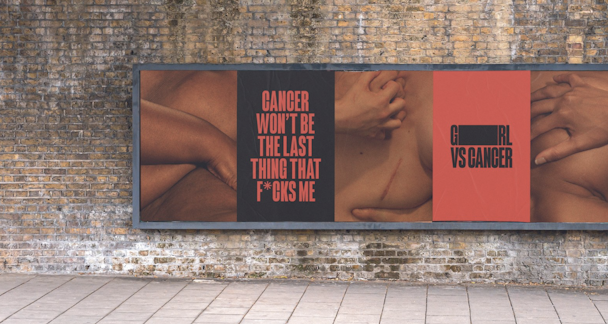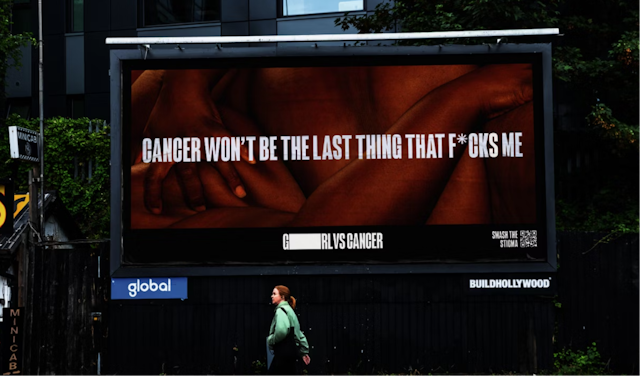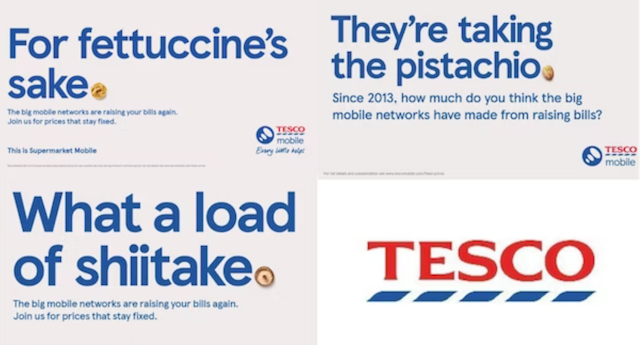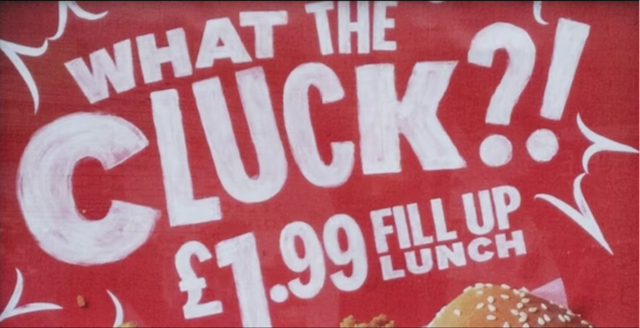When is it OK to swear in an ad?
Everyone in adland loves to say ‘fuck,’ right? But does the word belong in ads? In light of recent regulatory rulings on offensive language, we ask whether swear words can have a legitimate place in advertising.

Should ads have swear words? / BBH
This week, the Advertising Standards Authority (ASA) banned an out-of-home ad from the GirlvsCancer charity that had the word ‘F*ck’ on it, with the regulator claiming it caused serious and widespread offense.
The ASA ruling stated: “We considered that ‘fuck‘ was a word so likely to offend that it should not generally be used or alluded to in advertising, even if viewers would understand that the ads were intended to raise awareness of women’s experience with cancer.”
The purpose of the ad was to campaign for positive sexual health among women with cancer. BBH London is behind the ads; its managing director, Holly Ripper, says: “Getting people talking is the most effective way to kickstart change.” But she also acknowledges that the agency “takes the need for social responsibility very seriously“ and that it takes on board the ASA ruling about the OOH poster.

The ruling sparked widespread debate, with Christopher Joyce, creative director at VML (formerly VMLY&R), taking to LinkedIn to express his disappointment in the ASA ban. “The audience for whom this ad is aimed will miss out on such an insightful and empathetic rallying cry simply because some folks’ sensitivities seem to matter more than feeling seen and supported through some of the toughest times they’ll ever go through.”
Advertisement
While Joyce agrees that swear words in advertising should be policed by agencies, clients and regulators, he thinks there should be exceptions. “When used properly in advertising, swearing can provoke, it can empathize and it can empower – just like in real life. So, should a supermarket use one to advertise its latest deals? No. But might you use one to say, ‘We see you, we get you and, boy, are we behind you,’ as in the GirlvsCancer campaign? Abso-fucking-lutely.”
When to give a fuck
Over the years, the debate has been reignited several times, but there’s been little movement on policy in the UK. Code rule 4.1 in UK advertising regulation states that “marketing communications must not contain anything that is likely to cause serious or widespread offence.” According to ASA guidance, expletives such as “fuck” are very likely to offend, whereas milder words may be acceptable, depending on the context and media in which they appear.
Marketers should also only use swear words when targeting marketing communication at an audience that is unlikely to find the language offensive. Since it is hard to exclusively target adults, it’s likely any sweary broadcast and out-of-home ads would fall foul of UK ad regulations.
Advertisement
Should these ads have been banned?
BrewDog had its ‘F**k You C02’ out-of-home ads banned in 2020 for being inappropriate where kids could see it. Yet its print ads in The Week and The Economist were cleared for being placed in publications with an adult readership.

In 2022, Tesco Mobile had a campaign banned for replacing swear words with food items, for example, ‘What a load of shiitake.’

KFC received a similar ban for its 2019 ‘What the cluck’ ads. In its defense, KFC said it did not agree that the claim included a word that was a substitute for an expletive.

Is the regulation outdated?
But the lack of offensive language in advertising is at odds with a report that came out on Saturday (January 6) that said swearing had become more socially acceptable over the past two decades. Linguistics experts are seeing swear words increasingly used for reasons other than to offend – for example, in casual conversations, in humor and to show support.
With our lexicon evolving but regulation standing still, does advertising risk getting left behind when consumers are finding new ways to express themselves?
Marc Lewis, dean of the School of Communication Arts, doesn’t think so. “I’m all in favor of a swear word anywhere, but it doesn’t belong in advertising,” he tells The Drum. “We are uninvited guests into people’s living rooms. I’ll swear in my classroom and my house, but when I’m visiting somebody else’s house, I’m going to behave like I’m in church until I’m told otherwise.”
Suggested newsletters for you
This even extends to inferred swear words, Lewis says, adding that the “fun” part as a creative is seeing how far you can push the boundaries, but that the client should then step in and know the appropriate lines. “It’s the job of a responsible commercial communicator to respect the communities that you are putting the work into.”
Ash Rezainia, behavioral scientist at VCCP-owned Cowry Consulting, says research is clear that swearing is a “powerful tool” in capturing attention and can increase memorability, which is crucial for marketing. What is less clear from research, he says, is whether people will respond positively to swearing in advertising.
“Studies have highlighted a range of different factors, such as the strength of the swear word (eg, damn v fuck), the nationality of your target audience and even whether the language is native to them or not as having an influence. It has been shown that humor often pairs well with swearing in advertising campaigns, but this is not a one-size-fits-all approach. Indeed, the phenomenon of the Swearing Paradox, where some of the most offensive language is used with a high frequency in many contexts, suggests it would be unfair to deem swearing completely unfit for purpose within an advertising context.”
Rezainia warns advertisers to “tread carefully” given the “extremely high context-dependent factors” that would influence how a consumer would view the campaign.
Kirsty Hathaway, executive creative director at Joan London, adds that choosing to go against the grain and swear is a “social risk.” “It actually works to increase the believability and the trustworthiness of the message. It’s an expression of emotion. And sometimes ads are devoid of emotion. I’m here for bringing some fucking passion and emotion to our work. Swear word or not.”
On the effectiveness side, Andrew Tindall, global partnerships director at System 1 who spends his days analyzing adverts, agrees that swearing is a powerful tool but says it’s not accepted by everyone, so the person or brand using it is taking a risk. “They must really mean it. Plenty of behavioral science research shows it builds credibility and trust while creating emotional engagement. It can be incredibly effective at building brands.”

